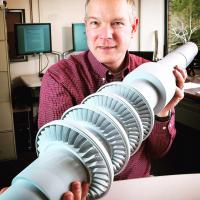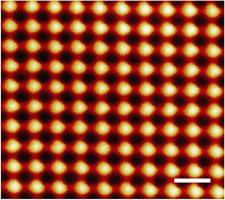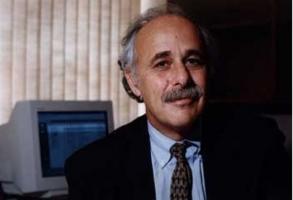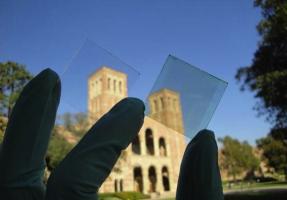Peter Seligmann, an ERA Science Board Member and Co-founder, Chairman, and CEO of Conservation International, believes that a sustainable future for our planet and the human race relies on collaboration across border lines. The following was featured in the May 21, 2013 issue of the Huffington Post.
Future Relies on US-China Collaboration
By Peter Seligmann
The world is sitting on a consumption time bomb -- more consumers, higher consumption, and more material intensity, coupled with diminishing supplies of natural capital, add up to a planet that is dangerously overspent and veering towards ecological bankruptcy in the not-too-distant future. China and the U.S., the two largest consuming nations with combined GDPs comprising one-third of global Gross Domestic Product, find themselves at the center of a potential catastrophe, in which human demand outspends Earth's supplies. The two nations consume one-quarter of world natural gas, one-third of world oil production, and produce nearly two-thirds of world coal. The two nations also are the planet's largest carbon dioxide emitters, jointly releasing nearly half of the world total each year.
As the problem worsens and threatens the sustainability of our planet, business-as-usual scenarios are insufficient to address the acute challenges that both nations, as well as the community of nations, will face in years ahead. As discussed in a major new report this week, U.S.-China 2022: Economic Relations in the Next Ten Years, only through massive collaboration and cooperation, can we chart a sustainable and positive path forward.
A 2012 assessment commissioned by 20 governments, the Climate Vulnerability Monitor, calculated that five million deaths occur each year from air pollution, hunger and disease as a result of climate change and carbon-intensive economies. That toll will rise significantly if current patterns of fossil fuel use continue.
Global growth in energy and consumer demand is driving much of this change. The Organisation for Economic Co-operation and Development (OECD) projects that the global middle class will skyrocket 250 percent to five billion people by 2030, with almost 90 percent of that growth coming from the Asia-Pacific region. Consumption in emerging markets is expected to rise from $12 trillion in 2010 to $30 trillion by 2025. These new consumers will move from bulk, unbranded products to highly processed and packaged goods.
From a producer's or investor's point of view, these may sound like profitable projections. However, runaway production to meet such ravenous, consumptive demand will create threatening deficiencies of our global natural capital, and therefore, shortages of supply, if we are not extremely careful.
China's urban transformation and rising middle class will play a significant role in these changes. In 20 years, China's cities will have added 350 million people, more than the entire population of the United States today. By 2025, China will have 221 cities with one million-plus inhabitants -- compared with 35 cities of this size in Europe today. The environmental ramifications of this unprecedented demographic shift will be severe.
Consequences are already being seen in the agricultural heartlands of both the U.S. and China, gripped by multi-year droughts. China has one-fifth of the world's population but just seven percent of arable land, further shrinking as urbanization converts nearly nine million more hectares of farmland per decade.
The U.S. and China, although at different stages with their respective economic and environmental challenges, are each increasingly vulnerable to resource scarcity, from minerals to water to food to the biodiversity that fuels science, medicine, and innovation. Climate destabilization is also a shared threat, with drought, floods, coastal storms, wildfires and other extreme weather occurring with alarming intensity and frequency. Both nations also have extensive supply chains operating in and withdrawing significant resources from other megadiverse countries, but neither nation will prosper in the long term if the other exhausts these critical supplies. These megadiverse nations face similar threats of natural resource exhaustion and collapse, but also can tap into the large pool of best practices in markets and governance to sustain their irreplaceable natural capital assets.
The costs and consequences of inaction are now undeniably immense and clearly indicate that business-as-usual is driving the global economy, society, humanity and the biosphere towards premature morbidity and mortality. A growing number of statesmen, corporate and civic leaders, and scientific experts have been loud and clear in their warnings: humanity has the next 10 years, starting immediately, to take and make transformational changes that put the global economy on a path consistent with keeping temperature rise below 2℃.
Joint initiatives and collaboration are in both of our nations' enlightened self interest to aid with immediate and sustained economic and environmental gains, as well as long-term well being and prosperity of our people. These initiatives will be a major and essential contribution to finding global solutions to devastating risks facing humanity and the biosphere.
Humanity's health and well-being hang in the balance.
The fundamental sustainability challenge for both nations is to sustain growth while maintaining, not diminishing or depleting, natural capital productivity and resilience. Together, we must account for, value and protect our natural factories and treasuries, so that they continue to generate the renewable goods and ecosystem services that our societies, families and businesses all depend upon to thrive.
Thankfully, there are many areas where the U.S. and China should work together to help achieve large-scale sustainability gains for themselves and for their trading partners.
First, being the two largest economies in the world, the U.S. and China should provide leadership in addressing global challenges, such as climate change and the loss of biodiversity, ecosystem health and vitality caused by unsustainable development. Success will require collaboration between the U.S. and China as well as their encouragement and support of the initiatives of their trading partners.
Second, the U.S. and China, accounting for 50 to 60 percent of global Research and Development, should embrace policies such as collaborative innovation networks to stimulate radical innovations in sustainability.
Third, Feed-In Tariff (FIT) performance payments are proving essential for spurring zero and near-zero emission power options -- solar, wind, geothermal, biowastes, small-scale hydro. Given the urgency this decade in reducing CO2 emissions, adoption of advanced FITs must become an imperative for aligning good governance, reduced CO2 emissions and flourishing markets. As of 2011, feed-in tariff policies have been enacted in China, seven U.S. states, and in more than 50 countries. China and the United States have the opportunity to show world-leading governance, by exponentially scaling up adoption of these policies in many more of our territories and provinces.
Fourth, nations require healthy ecological foundations for long term stability. Production that undercuts natural capital is not sustainable. The principles of 'No Net Biodiversity Loss' or 'Net Positive Impact' should be considered as normal business practice, using robust biodiversity performance benchmarks and assurance processes to avoid and mitigate damage, together with pro-biodiversity investment to compensate for adverse impacts that cannot be avoided.
Together, joint collaborations and cooperative partnerships between China and the United States, demonstrating leadership in markets and statesmanship in governance, offer our respective countries, the global community of nations, and the planet's biosphere a very hopeful, positive way forward. Let us make the most of it.
We at Conservation International believe strongly in this vision and know that we can make it reality if we "progress together, hand in hand," as a wise Chinese strategist once wrote. We must, so that future generations can praise our determination to sustain the health of the planet, which we all share and depend upon.




















































